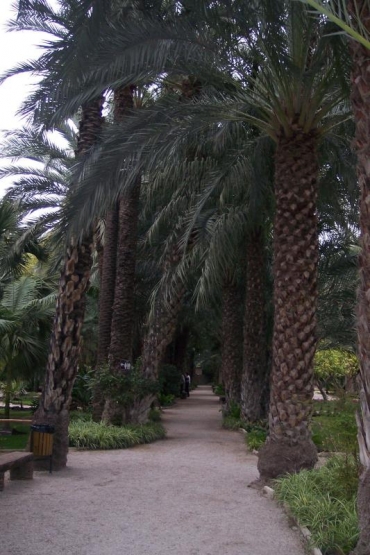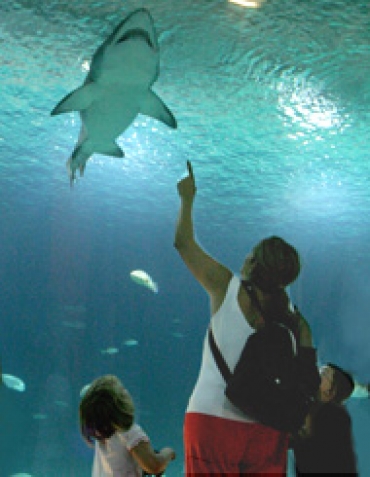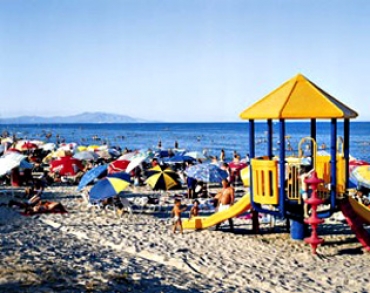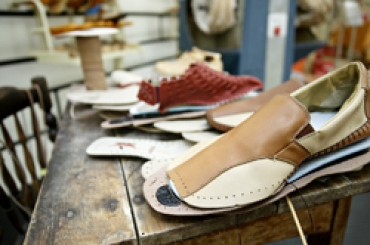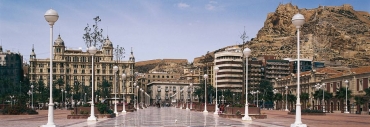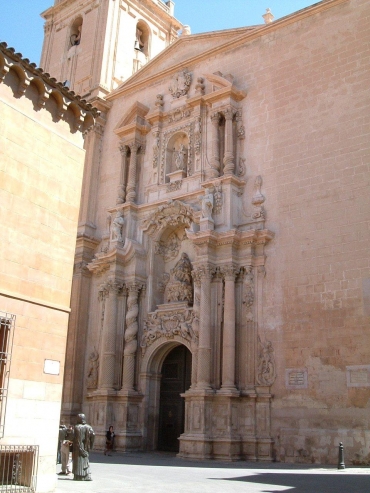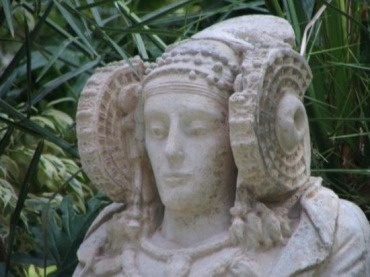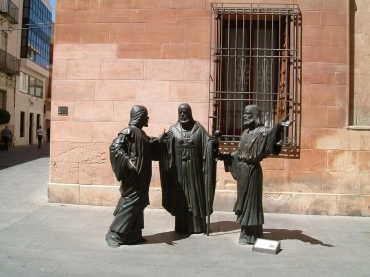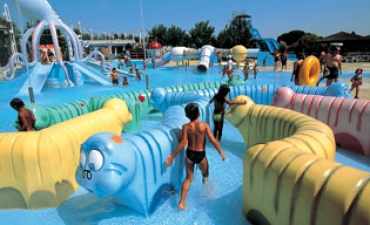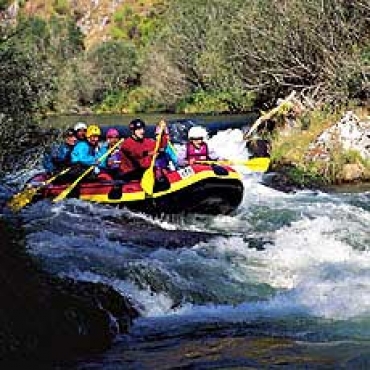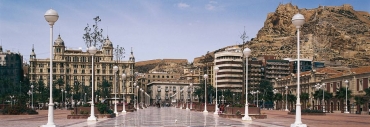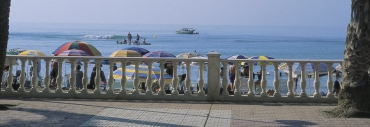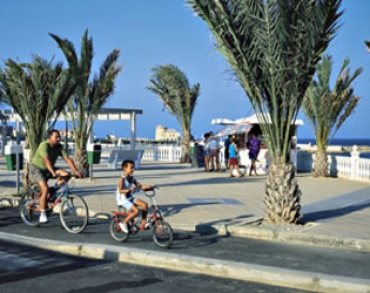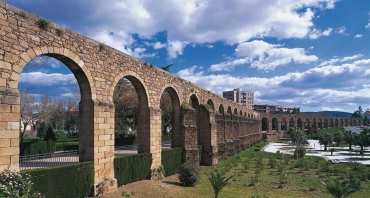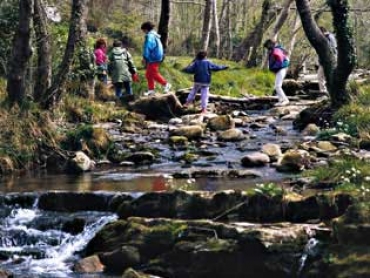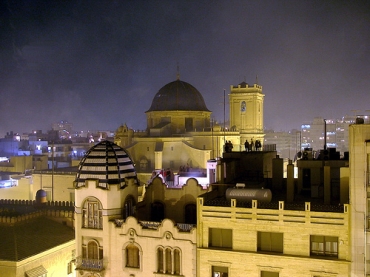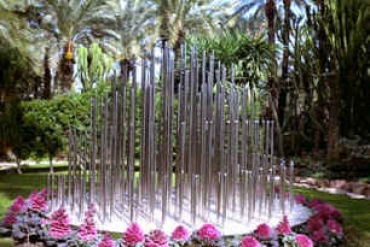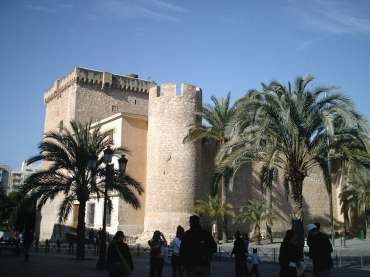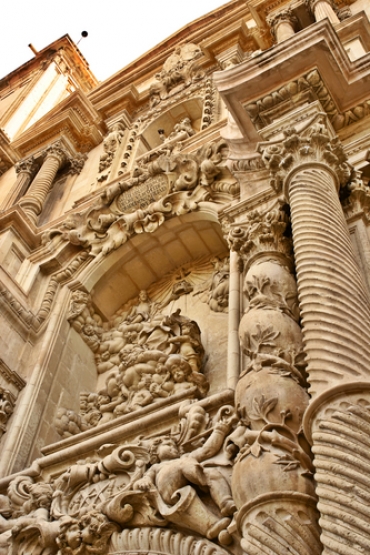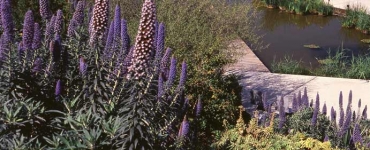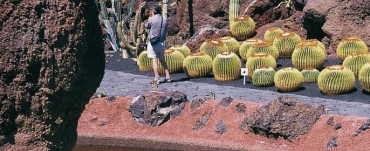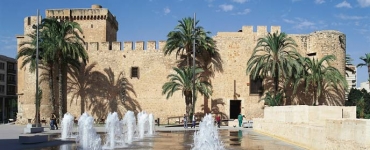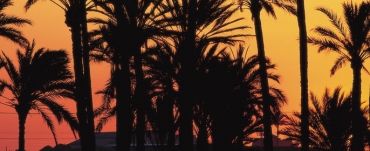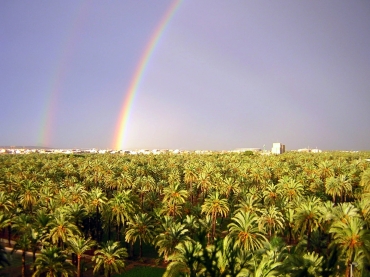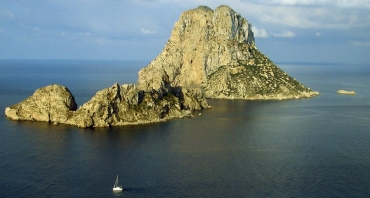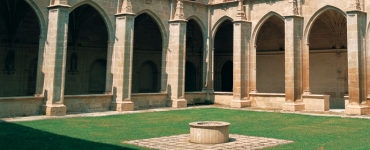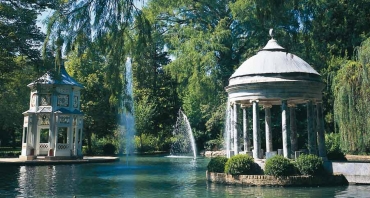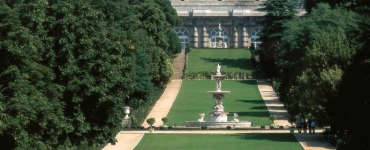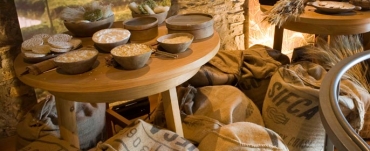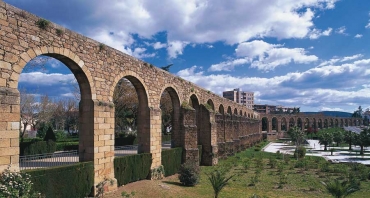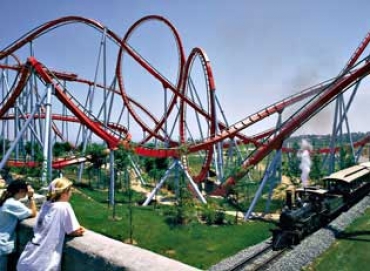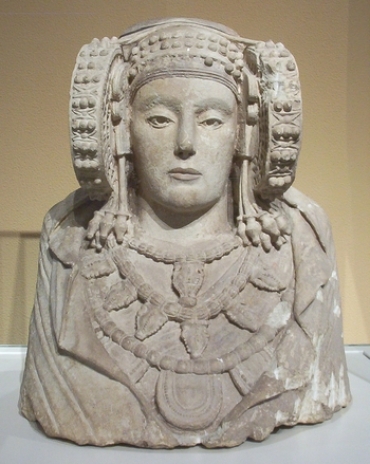Elche
Elche or Elx in Valencian...stands as the third largest city in the province of Alicante with 207,163 inhabitants (2003). Elche is a city rich in culture and history, containing, among other things, the Elche Palm Grove, a forest of greater than 200,000 palm trees that surrounds the city (declared a World Heritage Site by UNESCO in 2000).
Besides tourism, Elche's primary industry is that of shoes - it has over 1000 shoe factories, making it one of the most important areas in Spain and Europe for this industry.
History...
Greek, Roman and Moorish artefacts have been found in the Elche area, however the Lady of Elx (Dama de Elche) is considered the most important piece and dates back to the 4th century BC.
The first remains discovered at the archaeological site of L'Alcudia date from the Neolithic period, or about 5,000 B.C. This original settlement continued its development to be become the Iberian town of Helike in the 5th century B.C.
Later destroyed by Carthaginian troops, the town was renamed by the Romans to the Iulia Illice Augusta colony. In the Paleochristian (3rd-5th C.) and Visigothic (5th-8th C.) periods, Elche was known as the Basilica de Ilici.
The town then shifted to it's current location while under Moorish dominion in the Lower Middle Ages, to the area known as the Vila Murada.
The name was then changed to Elx (Elche), and it was at this time that agriculture began to take prominence with a complete irrigation system being introduced to the area (a dam to aid irrigation was built much later in 1632 on the Vinalopo river).
James I of Aragonliberated the city from the Moors in 1264, during the Reconquista, and the Moors subsequently built a new town in the environs of the Vila Murada, known as the Raval de Sant Joan.
The Municipal Park includes the Colomer, el Real, Mare de Déu and Baix Palm Plantations, covering an area of approximately 6 ha. These plantations were bequeathed to the city’s patroness, the Virgin of the Assumption by Nicolás Caro in 1661. Today Elx Town Hall is responsible for their preservation and maintenance. They were converted into public gardens in 1946, initially covering an area of 20,000m2.
Municipal Park...
The park’s most noteworthy elements are the 18th century Molí del Real, formerly a corn mill which was powered by a headwater from the main irrigation channel; the centre is an oriental-style building; the Rotonda, a beautiful open-air amphitheatre; the Hort de Baix; the dovecote and the bandstand, and the Tourist Information Office, again built in an Oriental style. There is also a tourist train that visits the most important parts of the park.
Huerto del Cura...
The Huerto del Cura, categorised as an artistic garden, covers 13,000m2. Inside visitors can enjoy a harmonious combination of Mediterranean and tropical plants in an atmosphere of calm and tranquillity while the palm trees, the garden’s true stars, endow it with its unique aspect.
Visitors can also contemplate the Huerto del Cura’s magnificent collections of palmaceous plants and cacti from all over the world which have become acclimatised to our climate. As well as palm trees, the Huerto del Cura is home to other typical Mediterranean trees such as lemon trees, orange trees, pomegranate trees, carob trees and jujube trees, together with other sub-tropical plants that have been collected over the years from the most exotic corners of the world.
However, due to its rarity, the Imperial Palm is the garden’s most treasured plant. This unique date palm, of exceptional symmetry and beauty, has seven arms sprouting from a single trunk. It obtained its name when Chaplain Castaño dedicated it to “Sissi” Empress Elizabeth of Austria on her visit to the plantation in 1894.
With an area of 50,000m2 the Filet de Fora Palm Tree Park is a true paradise in the city centre. Its vegetation is formed by a wide range of palm trees, native fruit trees and shrubs and in its centre there is a pond which delights the eye and cools the spirit.
This park is fruit of the restoration and fusion of the former Huertos de Monjo, Borreguet and Casimira palm plantations. As well as being pleasing to the eye, the park is equipped with football pitches, basketball courts and caliche and boules areas. It is the ideal place to enjoy a moment of peace and calm and nature at its best.
The City’s Archaeological Museums...
The City’s Archaeological Museum is located in the Palace de Altamira, a palace also known as Alcàsser de la Senyoria where there is a permanent display of Iberian and Roman pieces. The Alcàser de la Senyoria was the residence of the lords of the city between the 15th and 19th centuries.
This fortress was built in three different stages: the first, the Almohad part dating from the late 11th and early 12th century, can be observed in the basic body of the large tower and several plinths; the second part, belonging to the 15th and 16th centuries, and the largest part of the building, was raised after Gutierre de Cárdenas took over stewardship of the city.
It is a large, solid edifice with the walls executed in rubble work and interlocking masonry at the corners. The third and last part is the large 18th century south Fiesta built over the former medieval entrance.
MunicipalFesta Museum...
The Elche Mystery Play or Festa d’Elx is a sacred lyrical drama dating from the Middle Ages and is an example of the Assumption Mystery Plays which were performed in southern Europe at that time, narrating the Dormition, Burial and Assumption of the Virgin Mary. When theatrical performances in churches were banned as a result of the Council of Trent, the Elche Mystery Play became the last vestige of such performances, thanks to a Papal Bull granted in 1632 by Pope Urban VIII.
The Museum’s objective is to capture in both space and time part of the Festa’s magic for visitors coming to the city at any time of the year. The Museum is divided into two rooms: an exhibition showing the play’s mise en scène and a more dynamic exhibition using new technologies to bring to life the moving nature of this extraordinary play.
Tickets for the Mystery play’s performances on August 11th, 12th and 13th can be acquired from the beginning of July onwards in the Casa de la Festa next to the Museum.
Arab Baths...
According to the Prophet Mohammed, “Cleanliness is an act of faith” and for the Islamic world, water is a God-given gift linked to wisdom and purity. The Andalusí culture converted the ritual ablutions into one of life’s pleasures, using various oils and essences. The Arab hammân, descendants of the Roman thermae, had tiled walls and rooms which were separated by columns and arches, all crowned by vaulted ceilings with lanterns. Not only were they a place to relax, they were also meeting places. An audio commentary complements the visit to the baths, explaining the origin of this public service and how they worked.
Museumof Contemporary Art...
The Museum of Contemporary Art has a large collection of vanguard art, especially by Spanish artists. It is sited in the former Ayuntamiento del Raval located in Replaceta de Sant Joan.
Some of the artists whose works make up the collection are: Arcadi Blasco, Juana Francés, Salvador Soria, el Grup d’Elx (Agulló, Coll, Castejón and Sixto Marco), Toni Miró, Equipo Crónica, Amalia Avia, Juan Genovés, Viola, Cacho, Antonio Suárez, Eusebio Sempere, José Hernández, Trepat, José Fuentes, Mompó and Eduardo Sanz.
Puçol Agricultural Museum...
At the end of the 1970’s, a group of teachers from the school located in the rural district of Puçol began their labour of recovering, restoring and cataloguing agricultural artefacts in order to avoid the permanent loss of the agricultural traditions and methods that were being substituted by new farming technologies. The original project has grown spectacularly with the donation of numerous articles while it has also expanded into other fields such as rural housing, clothing, hunting, education, commerce and industry.
A visit to the centre is an entertaining exercise in keeping our recent past alive, seeing crafts that have fallen into disuse and the surroundings in which they were carried out.
La Alcudia...
This site was inhabited from the Neolithic until the late Visigothic period, explaining the extraordinary wealth and variety of the objects uncovered here. Its fame however rests on the discovery in 1897 of the bust of the Dama de Elche a masterpiece of Iberian art, which was probably carved circa the 5th century BC. The museum houses objects dating from the Copper and Bronze Ages, important Iberian pieces such as the fragments of various sculptures and pottery decorated with figures, and numerous pieces from the Roman period.
Visitors’ Centre...
The Visitors’ Centre is a space where visitors to Elx can see a detailed audiovisual presentation on the city: its history, traditions, culture, fiestas and economy. After a short video, visitors can obtain more in-depth knowledge of themes that interest them using the multimedia facilities available in the different niches. The centre is located in a striking Oriental-style building built in 1946 as main pavilion in the city’s Industrial Exhibition. When the Exhibition concluded, all of the other constructions were demolished while this pavilion was first refurbished as the Municipal Archaeological Museum and later as a Museum dedicated to the Blanched Palm and a space for temporary exhibitions.
Palaeontological Museum...
The display of exhibits from various archaeological sites and the presentation of scientific knowledge gained over centuries of research enable visitors to take a journey through the evolution of life on Earth in Elx’s Palaeontological Museum.
The visit begins with a romantic re-creation of the study of the early-20th-century archivist, librarian and archaeologist Pere Ibarra i Ruiz who is regarded as a pioneer of archaeological and palaeontogical research in the city.
Visitors then pass through the museum’s rooms, arranged in chronological order displaying the various stages into which Prehistory has been divided, from the theory of Pangaea and continental drift through to the various geological periods: the Precambrian Palaeozoic, Mesozoic and Cenozoic, with displays of fossils and replicas of human skulls showing the origins of the world as we know it. The Museum also has a room for temporary exhibitions and a magnificent collection of minerals.
Palm Groves Museum...
The “Museu del Palmerar” reveals the origins, history, development and culture of the Elx Palm Groves, making it much easier for you to understand the reasons why the UNESCO classed this exceptional site as World Heritage.
The Museum is located in a traditional farmhouse in the centre of town known as “Hort de Sant Plàcid” (very near the Huerto del Cura Garden). The rooms have been themed to give you a full historical report of the palm groves’ history, the palm tree usages and its evolution making it one of the city’s main symbols. Thus, it is conceived as a collection within the palm forest where the tourist will receive in-depth knowledge of its historical and cultural symbolism whilst enjoying the site’s unique beauty.
All this can be done walking through different rooms in which, videos, collages, boards and other exhibition elements, including touch screens and an enveloping sound where a mosaic of images, compositions and data are projected, situating and informing the visitor with all kind of details. This route continues with the visit to the surrounding palm grove, an extension of the indoors museum’s visit.
Beaches...
The municipality of Elx has 9 km of white beaches, equipped with all of the facilities necessary for visitors to enjoy nature to the full. With beaches of fine white sand, exotic dune systems and sandy semi-urban beaches, Elx has a varied and highly interesting coastline to offer visitors.
Wildlife...
The borough of Elx, covering 326 km2, offers its visitors a wide range of scenery, habitats and flora and fauna. This latter can be divided into three different ecosystems: the hills and downs forming the borough’s inland sierra; the coastal dune systems and the wetlands typical of Mediterranean coastal areas that are found between the above two areas.
The existence of wetlands is a typical feature of the Valencian landscape. These are low-lying, marshy areas also known as marjal, carrizal, saladar, and almarjal, having all of the typical features and vegetation of such wetlands. Today most of Valencia’s wetlands have disappeared and those that survive are noticeably retreating and suffering from a process of degradation.
In spite of the above, public awareness of environmental problems and the creation of legislation dealing with protected natural areas have been successful, in part, in putting a stop to the destruction of some highly ecologically important wetlands.
Fiestas...
Elche’s calendar is full of fiestas with religious origins, such as Palm Sunday which has been declared of International Tourist Interest. Thousands of Elx’s citizens parade through the streets bearing their blanched palm leaves in what is a beautiful prelude to Holy Week. During Holy Week, the city is given over to religious processions full of religious fervour and the week ends with the joyous Hallelujahs of Easter Sunday.
Festive activities reach their zenith in August with the celebrations in honour of the Virgin of the Assumption. Celebrations begin with the processions of Moors and Christians commemorating the Christian conquest of the city in 1265 by King Jaume I. For days the streets are a constant spectacle of lights, colours, pomp, fireworks, and music.
One of the most spectacular moments occurs on August 13th, during the Nit de l'Alba a magical night when the skies of Elche are illuminated by fireworks in honor of the city’s Patroness.
The axis around which these fiestas revolve is the Elx Mystery Play a lyrical medieval drama depicting the death and Assumption of the Mother of God. The piece is in two acts: “la Vespra” performed on the 14th and “la Festa”, performed on the 15th
After the performance on the 14th, concluding with the Dormition of the Virgin, the traditional Noche de la Roa or vigil of the Virgin’s body, takes place. Many of Elche’s citizens take part in the ceremony, processing through the streets of the old Vila Murada, or walled city, bearing lit candles. The night also has its pagan side since many other people also stay up all night, partying until dawn.
On the morning of the 15th, the day of the Assumption of the Virgin, the procession of the “Mare de Déu”, or Mother of God takes place. Actors from the Mystery Play also participate in this procession as the image of the Virgin is borne through the streets of the city’s historical quarter.
A singular tradition is the Arrival of the Virgin. This takes place on December 28th and commemorates the legendary discovery of the chest containing the image of the Virgin and the Consueta, or libretto of the Mystery Play, on Tamarit beach by coastguard Francesc Cantó. The re-enactment of Cantó’s swift horse ride through the streets of Elx is the festival’s high point.
